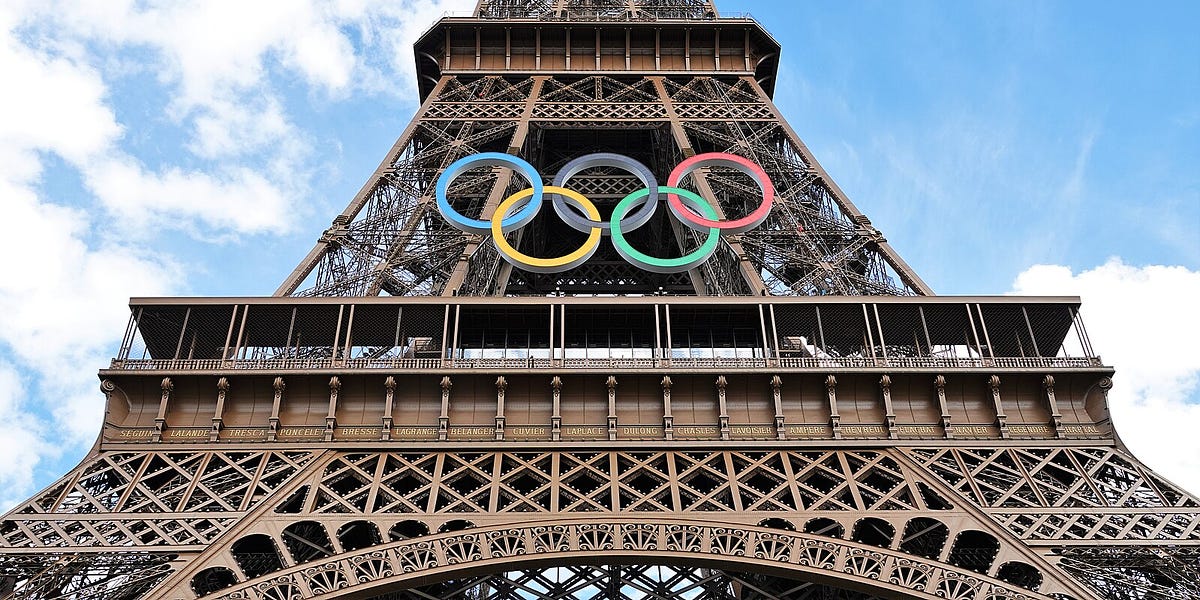The 12 newcomers to the Baseball Hall of Fame ballot, announced on Monday, combined to make 58 All-Star teams. Half of them did it at least five times. They were stalwarts of the sport, and while most don’t quite merit a checkmark next to their names, all deserve a salute for their distinctive impact on the game.
José Bautista
The bookends of José Bautista’s career make him look like a one-man Immaculate Grid: Baltimore, Tampa Bay, Kansas City and Pittsburgh in year one; Atlanta, the New York Mets and Philadelphia in year 15.
In between, Bautista was a force for the Blue Jays. He smashed 227 home runs from 2010 through 2015; no other hitter collected even 200 in those seasons. Few players have ever risen so emphatically from utilityman to preeminent slugger.
“Our scouts didn’t really think he was going to be an everyday player,” said Jim Duquette, the former Mets general manager, who traded Bautista for Kris Benson in 2004, as part of a three-way deal with the Royals and Pirates. “The Pirates were highest on him, and they thought of him as a potential role player. We didn’t feel like we were giving up any impact.”
Bautista made little impact with the Pirates, either. But after a trade to Toronto in 2008, he stopped using a toe tap as the trigger mechanism for his swing. Instead, Bautista would load his weight on his back leg, twist his front hip and lift his knee, like a cobra hovering over its prey. Then he’d uncoil and pull some of the most vicious home runs of his era.
You might remember this one:
Adrián Beltré
Adrián Beltré played third base all wrong. Instead of flowing through the ball while fielding it, Beltré would stop, catch, and then unleash his throw. His manager with the Texas Rangers, the infield guru Ron Washington, was astounded.
“When the feet stop moving, then the ball can play you,” Washington, now the Angels’ manager, once said. “Beltré’s one of the oddest guys. I’ve never seen the ball play him. Most guys that would do it the way he does it, they would get eaten up.”
Beltré won five Gold Glove awards — only three Hall of Fame third basemen (Brooks Robinson, Mike Schmidt and Scott Rolen) have more — but his arm, with its knack for precise throws from all angles, was his superpower. Evan Longoria, a three-time Gold Glover, could never understand it.
“He has such a good arm that he can throw it flat-footed from anywhere,” Longoria said, during his prime with Tampa Bay. “You can’t teach that.”
Beltré tried to play third base conventionally, he said, but found that the less he used his feet, the more accurate his throws became. In 1997, his last full year in the minors with the Dodgers, he made 37 errors. In 2004, his last year before free agency, he made 10.
Beltré hit 48 home runs that season and would finish with 477, to go with 3,166 hits. The Rangers retired his No. 29, and he celebrated on the field with them on Nov. 1, when they finally clinched the championship that eluded him as a player.
“I know how hard it is to win ballgames in the World Series,” Beltré said. “The Rangers fans are so loyal, and they deserve this.”
Bartolo Colon
The first time he worked with Bartolo Colon, in 2013, Stephen Vogt asked another Oakland catcher, Derek Norris, for advice.
“Sit back and enjoy it,” Norris replied, and that’s what Vogt did. He caught for 10 seasons in the majors and said nobody was easier or more fun to catch than Colon.
“I didn’t know if it was going to be a four-seamer or a two-seamer, but it didn’t matter because, either way, it was going to end up right at my glove, right where I set up,” said Vogt, now the manager of the Cleveland Guardians. “Everyone in the world knows he’s throwing a fastball, but he didn’t miss over the plate. It was always going to end up right at my glove.”
It takes remarkable skill to repeat a delivery with such precision that you always hit your spot. But Colon — a rotund righty called “Big Sexy” — was always more talented and athletic than his caricature. He lasted 21 seasons and finished with 247 victories, the most of any Latin American pitcher. An All-Star for four teams, Colon had two 20-win seasons, a Cy Young Award — and one monumental home run.
Colon won’t get into the Hall — he did serve a suspension for performance enhancing drugs, and his 4.12 career ERA would be the highest in Cooperstown — but he’s an all-time character who made the game fun.
“The way the writers vote is out of my control; it’s up to them,” Colon wrote in his memoir, with Michael Stahl. “In my mind, and in the minds of my family, friends, and the people of the Dominican Republic, I am a Hall of Famer.”
Adrián González
There were three superstars in the first round of the 2000 MLB Draft: Chase Utley of the Phillies and two players who never appeared for the team that chose them. One was Adam Wainwright, who was traded by Atlanta to St. Louis for J.D. Drew before the 2004 season. The other was Adrián González, the first overall choice, who was dealt from the Marlins to the Rangers in July 2003.
The Marlins got a rental closer, Ugueth Urbina, who helped them win the World Series. That made the deal a success, but the price was steep. González was an All-Star for three teams (San Diego, Boston and the Dodgers) and stands as one of the most successful first overall picks in the 59 years of the draft.
Only five top choices have more career bWAR than Gonzalez’s 43.5: Alex Rodriguez, Chipper Jones, Ken Griffey Jr., Joe Mauer and Bryce Harper. All of those players have won an MVP award, and González never finished in the top three in the voting. But, as the first player drafted in the 2000s, he achieved everything the Marlins could have expected — just none of it as a Marlin.
Matt Holliday
You hear the term “Hall of Very Good” a lot, usually as a pejorative for a player deemed undeserving of Cooperstown. It sounds like an insult, but there has to be a line somewhere, after all. And the nature of baseball makes you wonder how the Very Good guys would do against a team of Hall of Famers.
Consider the post-World War II retired players most similar to Matt Holliday on Baseball Reference. None of them are in the Hall of Fame, but boy could they hit: Moises Alou, Magglio Ordoñez, Shawn Green, Ellis Burks, Will Clark, Reggie Smith, Adrián González and Paul O’Neill.
Add Holliday to that group and you’ve got a lineup of bashers who, at their best, could cause trouble for any pitcher with a plaque. None of them won an MVP, but Holliday was the runner-up to Jimmy Rollins in the National League in 2007 — and did win that honor in the NLCS that fall, leading the Rockies to their only World Series.
Holliday’s son Jackson was 3 years old that season but was already so prolific with a bat that a Rockies pitcher, Josh Fogg, predicted he would someday be a first-round draft pick. Would Jackson be a better hitter than Matt someday? “I would bet yes,” Fogg said then, and early returns are encouraging — Jackson, now 19, was the first overall choice in the 2022 draft, by Baltimore, and is widely considered the No. 1 prospect in baseball.
Victor Martinez
In 2014, Victor Martinez hit .335 with 32 homers and a .974 OPS. Only one other switch hitter in major league history has reached all of those benchmarks in a single season: Mickey Mantle, who did it twice. Martinez was the best hitter on a Detroit Tigers team that might be the most star-studded roster never to win a playoff game.
The pitching staff had five past or future Cy Young Award winners: Justin Verlander, Max Scherzer, David Price, Rick Porcello and Robbie Ray. The bullpen had Joe Nathan and Joakim Soria. The offense also included Miguel Cabrera, J.D. Martinez, Torii Hunter, Ian Kinsler, Nick Castellanos and Eugenio Suárez.
The Orioles swept those Tigers in the division series. The team was not nearly as strong as the sum of its parts: some players were past their prime, some were just rookies, and Verlander was pitching hurt. But the collection of names is staggering — it’s the last Tigers team to reach the playoffs — and that season, Victor Martinez may have been the best of the bunch.
Joe Mauer
Joe Mauer made his pro debut at 18 with the Elizabethton (Tenn.) Twins in the summer of 2001. He batted .400. He was a hometown boy from St. Paul, and the fans in Minnesota could dream on him. Maybe, just maybe, their underfunded ballclub — last in the majors in payroll — might keep him for his whole career.
Then, that fall, major league owners voted to eliminate the Twins franchise. It was a short-lived ploy, but it’s pretty wild in hindsight: Officially, for the record, MLB wanted to solve its economic issues by letting the Twins and the Montreal Expos just … die.
The Twins obviously stayed in Minneapolis, eventually opening a charming outdoor ballpark. And yet somewhere along the way, Mauer’s career seemed less than fulfilling. He made a lot of money, hit a lot of singles and missed a lot of games. His teams never won in the playoffs. He stopped catching because of concussions at age 30.
But remember the context. If you had said, in November 2001, that not only would the Twins escape death row, but also that the kid from St. Paul would win an MVP, three Gold Gloves, three batting titles and play his entire career at home — all while conducting himself with class and dignity — you would have absolutely signed up for it.
Imperfect careers can still be extraordinary.
Brandon Phillips
For the final home run of his 17-year career, in 2018, Brandon Phillips did something no Red Sox player had ever done before: He slammed a go-ahead homer in the ninth inning of his first game for the team.
Phillips had worn No. 61 when he arrived in the majors with Cleveland in 2002. In the last of five big-league stops, he wore No. 0. With one on and two outs in the ninth inning, and Boston trailing by a run in Atlanta, Phillips unloaded on a first-pitch fastball, swinging so hard and craning his back so fully that he nearly lost his balance. The Sox held on to win, 9-8.
“For me to get here and for me to do what I did today, it was quite amazing,” Phillips, who grew up in Georgia, said later. “Especially for me to do it in Atlanta in front of my family and friends.”
It was one of the more memorable victories for the 108-win Red Sox, who went on to win the World Series. Phillips, alas, had been promoted too late for the playoff roster, meaning that his final postseason game would always be a loss with Cincinnati in the 2013 NL wild-card game.
That night in Pittsburgh, Phillips said that the Reds had choked, a damning word that athletes almost never use. Then he asked, rhetorically, what he had done in the game. Phillips had gone hitless, leaving three runners on base.
“I choked,” he concluded. “I didn’t do nothing. It’s not the team’s fault, it’s my fault. I had the opportunity to come through for the team, and I didn’t do that.”
Harsh words, to be sure. But you had to admire a player who was willing to share honest, raw emotions at a low moment in a proud career.
José Reyes
José Reyes is the last major leaguer to steal 75 bases in a season. He did it 2007, when he swiped 78 for the Mets, and even last season’s rule changes — bigger bases, limited pickoff attempts — could not produce a total to match it. Ronald Acuña Jr. led the majors with 73.
Reyes topped the NL in steals three times before turning 25, but he never did it again. He left the Mets in December 2011 for a six-year, $106 million deal with the Marlins, who traded him to Toronto after one season. Reyes’ skills did not age well, which is hardly unique.
To date, 13 players have finished nine-figure contracts that began at some point after a 30-steal season. Speed was a part of each player’s game — but as they lost it, their value fell sharply. Here’s a look at how all of those players (except Derek Jeter) slowed down after getting paid.
| Player | Years covered in contract | SB high before contract | SB high during contract |
|---|---|---|---|
|
Elvis Andrus |
2015-2022 |
42 |
31 |
|
Carlos Beltrán |
2005-2011 |
42 |
25 |
|
Charlie Blackmon |
2018-2023 |
43 |
12 |
|
Ryan Braun |
2016-2020 |
30 |
16 |
|
Carl Crawford |
2011-2017 |
60 |
23 |
|
Jacoby Ellsbury |
2014-2020 |
70 |
39 |
|
Derek Jeter |
2001-2010 |
30 |
34 |
|
Matt Kemp |
2012-2019 |
40 |
12 |
|
José Reyes |
2012-2017 |
78 |
40 |
|
Alex Rodriguez |
2001-2010* |
46 |
28 |
|
Alfonso Soriano |
2007-2014 |
43 |
19 |
|
Mike Trout |
2015-2020 |
49 |
30 |
|
David Wright |
2013-2020 |
34 |
13 |
(*Rodriguez opted out of his original contract after 2007 and signed another 10-year deal; his stolen-base high in the second deal was 18.)
Reyes was a wondrous young player, exciting in the ways MLB wants to encourage. But age, as they say, is undefeated.
James Shields
James Shields wore a three-piece suit for one of his first road trips with the Kansas City Royals in 2013. The team had a travel dress code — sports coats and slacks — but to Dayton Moore, the general manager who traded for Shields, this represented a more serious commitment to professionalism.
“Getting young guys to do it, OK, fine, they’re going to do whatever you want,” said Moore, now a senior advisor for the Texas Rangers. “But then James Shields comes over and he’s dressing that way on the plane. And people may look at that and say, ‘Whatever, who cares about that stuff?’ But when you’re looking for veteran-type players that would model greatness and expectations at the highest level for young guys, it’s really important.”
Maybe there wasn’t quite greatness in Shields, not as there was in, say, C.C. Sabathia, Justin Verlander, Roy Halladay and Félix Hernández, who all won the Cy Young Award. But from 2007-2012 — the six seasons before the Royals traded for Shields — those were the only pitchers who threw more innings.
You knew what you’d get in Shields: a durable, fearless competitor, and that’s what Moore wanted. That’s why he traded some of his top prospects to the Rays for Shields and Wade Davis, hoping to jolt a young team that had slogged through four consecutive 90-loss seasons.
“We went to the Capital Grille after the press conference,” Moore said, “and this guy was all about: ‘We’re winning. I mean, this stuff’s over. We’re winning here.’”
And they did. In Shields’ two seasons with the Royals, the team had its first back-to-back winning records (in non-strike years) since the 1980s. Shields worked more innings than any other American League pitcher in those years, and when the World Series finally returned to Kansas City, in 2014, Shields threw the first pitch.
Chase Utley
It was a midweek afternoon in August 2006, broiling hot in Atlanta, two teams buried in the standings. In the seventh inning, Chase Utley slashed a three-run double to left to put the Phillies ahead of the Braves. On the next pitch, Ryan Howard chopped a ball off the plate. The pitcher gathered it, flipped to first for a routine out — and there went Utley, charging around third, diving in safely at home under a throw. Two bases on a groundout to the pitcher.
“Wow!” shouted Chris Wheeler, a Phillies broadcaster, whose partner then delivered a line that would follow Utley for the rest of his career.
“Chase Utley,” Harry Kalas declared, “You are the man!”
St. Louis had Stan “The Man” Musial, and Philadelphia had “Chase Utley, you are the man” — the whole phrase, best delivered with Kalas’ signature flourish. That moment began Utley’s ascent from mere superstar to civic icon. Two years later, he was a champion.
“He didn’t want attention, he didn’t want: ‘You’re the man,’” Wheeler said last week. “But to come from Harry, he always appreciated that, and that was important to him. Harry would call him ‘The Man’ all the time, so it just came out on the air that day when he made that unbelievable play.”
Utley didn’t say much, and he didn’t have to. In Philadelphia, everybody adored him. His Baseball Reference page lists two nicknames: “The Man,” of course, and also “Silver Fox.” He was tough, he was cool, and he knew it.
David Wright
David Wright is part of a club capped at 30, stocked with hallowed, one-name titans of the game: Aaron, Brett and Clemente; Cobb, Gwynn and Ichiro; Jeter, Mays and Musial; Ripken, Yaz and Yount. Each is the career hits leader for a major league franchise.
It’s funny, though: More than a third of the 30 are not in the Hall of Fame. Ichiro Suzuki will be, and Todd Helton is trending that way. Pete Rose is ineligible. Even so, that still leaves 10 players who hold a franchise hits record but are not in Cooperstown:
Garret Anderson, Angels: 2,368
Bert Campaneris, A’s: 1,882
Luis Castillo, Marlins: 1,273
Carl Crawford, Rays: 1,480
Tony Fernandez, Blue Jays: 1,583
Luis Gonzalez, Diamondbacks: 1,337
Jimmy Rollins, Phillies: 2,306
David Wright, Mets: 1,777
Michael Young, Rangers: 2,230
Ryan Zimmerman, Nationals: 1,846
Rollins is back on the ballot for a third try this year, and Zimmerman is not yet eligible. The other seven did not get the 5 percent required to last beyond year one.
Wright probably won’t, either. He played fewer than 100 games after turning 32, limited by a spinal condition. But he was healthy for the Mets’ World Series run in 2015, and when he fought his way back for a cameo at the end of the 2018 season, it symbolized every athlete’s desire to triumph, even in a small way, over physical limitations.
“I honestly believe I reached my ceiling as an athlete, playing the game the right way and squeezing the most out of my ability,” Wright wrote in his memoir, with Anthony DiComo. “I don’t think many players can say that.”
GO DEEPER
Make your Hall of Fame picks in our first-ever The Athletic MLB reader Hall survey
GO DEEPER
The 2024 Baseball Hall of Fame ballot, explained
(Top photo of Adrián Beltré and Joe Mauer in 2017: Brace Hemmelgarn / Minnesota Twins / Getty Images)

Daniel Miller is a sports fanatic who lives and breathes athletics. His coverage spans from major league championships to local sports events, delivering up-to-the-minute updates and in-depth analysis for sports enthusiasts.






